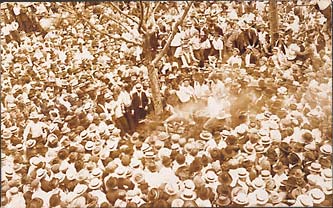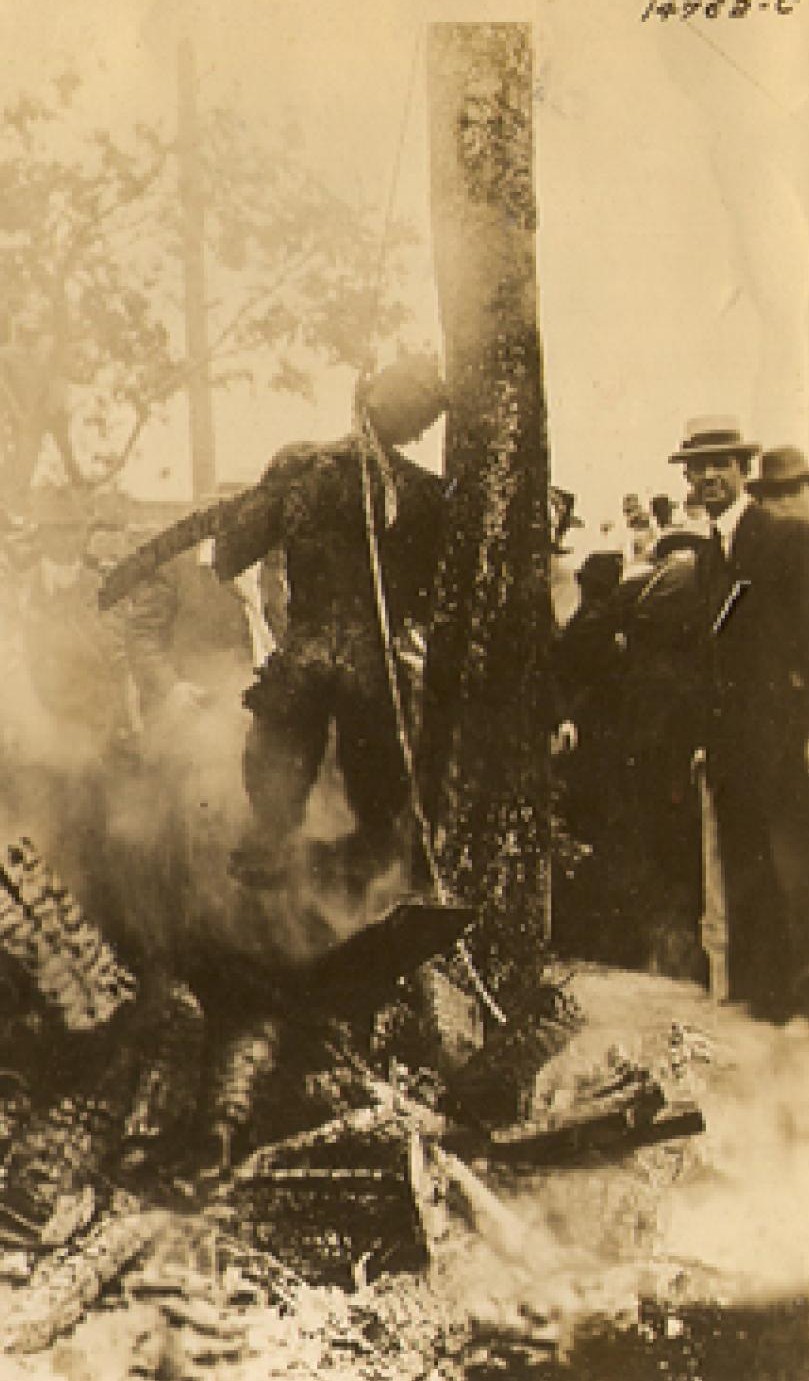
Lynching of Jesse Washington (1916)
According to the Texas Historical Society -- JESSE WASHINGTON LYNCHING. Of the 492 lynchings that occurred in Texas between 1882 and 1930, the incident that perhaps received the greatest notoriety, both statewide and nationally, was the mutilation and burning of an illiterate seventeen-year-old black farmhand named Jesse Washington by a white mob in Waco, Texas, on May 15, 1916-an event sometimes dubbed the "Waco Horror." Washington was arrested on May 8, 1916, and charged with bludgeoning to death fifty-three-year-old Lucy Fryer, the wife of a white farmer in Robinson, a small community seven miles south of Waco. After confessing that he had both raped and murdered Mrs. Fryer, Washington was transferred to the Dallas County Jail by McLennan county sheriff Samuel S. Fleming, who hoped to prevent mob action at least until the accused could have his day in court.
Washington's trial began in Waco on May 15, in the Fifty-fourth District Court, with Judge Richard I. Munroe presiding over a courtroom filled to capacity. After hearing the evidence, a jury of twelve white men deliberated for only four minutes before returning a guilty verdict against the defendant and assessing the death penalty. Before law officers could remove Washington from the courtroom, a group of white spectators surged forward and seized the convicted youth. They hurried him down the stairs at the rear of the courthouse, where a crowd of about 400 persons waited in the alley. A chain was thrown around Washington's neck, and he was dragged toward the City Hall, where another group of vigilantes had gathered to build a bonfire.

Upon reaching the city hall grounds, the leaders of the mob threw their victim onto a pile of dry-goods boxes under a tree and poured coal oil over his body. The chain around Washington's neck was thrown over a limb of the tree, and several men joined to jerk him into the air before lowering his body onto the pile of combustibles and igniting a fire. Two hours later several men placed the burned corpse in a cloth bag and pulled the bundle behind an automobile to Robinson, where they hung the sack from a pole in front of a blacksmith's shop for public viewing. Later that afternoon constable Les Stegall retrieved the remains and turned them over to a Waco undertaker for burial.
Though lynching violated Texas law, no members of the Waco mob were prosecuted. However, the foreman of the jury that convicted Washington criticized local law officers for failing to prevent the lynching, and a special committee of Baylor University faculty passed resolutions denouncing the mob. A black journalist, A. T. Smith, editor of the Paul Quinn Weekly, was arrested and convicted of criminal libel after he printed allegations that Lucy Fryer's husband had committed the murder. Other blacks in the Waco area condemned the Fryer killing and remained conciliatory toward the white population.

Although the Nation, the New Republic, and the New York Times severely condemned the lynching, only a few Texas newspapers denounced the Waco mob. The Houston Post, Houston Express, Austin American, and San Antonio Express printed critical editorials, but the Dallas newspapers made few comments. The Waco Morning News expressed regret for the incident but resented the "wholesale denunciation of the South and of the people of Waco" by the national press. The most important demonstration of outrage emanated from the National Association for the Advancement of Colored People, which launched a full-scale investigation of the affair and employed the incident as a cause célèbre in the organization's crusade for a federal antilynching bill. A photographer's pictures of the lynching strengthened the argument. Although the American entrance into World War I delayed the NAACP campaign until 1919, the "Waco Horror" remained a vivid indication that though the frequency of lynchings had begun to decline in the United States after 1900, those incidents that still occurred often were characterized by extreme barbarity.
Your blog is very important. Keep up the excellent work.
ReplyDeleteIT Services
ReplyDeleteDigital Marketing
Web Design
SEO
hermes
ReplyDeletefear of god
air jordan travis scott
bape hoodie outlet
golden goose
off white jordan
bape
supreme
jordan shoes
jordan shoes